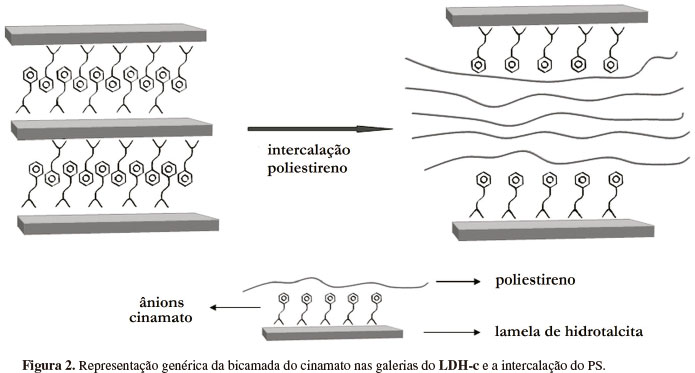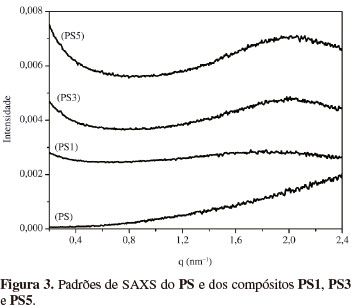Polystyrene composites with 1, 3 and 5% in weight of cinnamate-functionalized anionic clay were prepared following a melt state intercalation route using twin-screw co-rotational extrusion followed by injection molding in order to obtain materials with distinct and UV absorbing properties using commonly available processes. The composites were characterized by XRD, MET, TG, DSC, UV-Vis, SAXS and mechanical testing (tensile, impact, flexural and hardness). The interlamellar distance of the clay galleries increased after melt blending as a result of polystyrene intercalation. A moderate degree of clay dispersion was achieved and the polystyrene composites comprised intercalated phases and clay microtactoids. The composites showed mechanical properties generally similar to neat polystyrene. Nevertheless, the polystryrene composites were able absorbing UV light, which increased with increasing clay-content, and showed potential use as filter against this harmful radiation.
Polymer composite; anionic clay; polystyrene; UV absorbent









